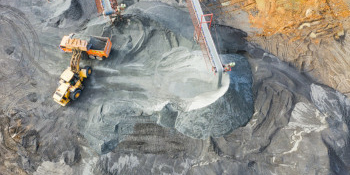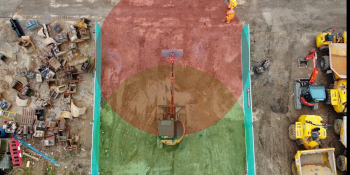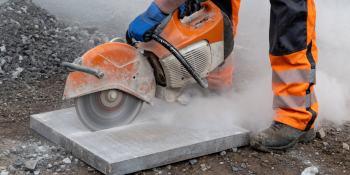Playing by the rules: understanding the regulatory landscape with regards to HAVS
It can be difficult to know whether you’re doing enough to manage your workers’ exposure to Hand Arm Vibration (HAV).
The regulations governing this area of compliance are nuanced and technical, which can create confusion about what’s required for an organisation to become (or to stay) compliant. Ultimately, duty holders are obligated to carry out a risk assessment that is representative of a workers’ exposure. Of course, continually measuring a workers’ exposure would also be compliant, but the HSE have acknowledged plainly that such an undertaking would be wasteful under most circumstances.[i]
This is because the nature of tool use is such that obtaining an exact measurement of a worker’s exposure to HAV during a typical workday is not feasible or practical. In direct response to this real-world challenge, the HSE has made it clear that compliance is achieved where an employer carries out a risk assessment that is representative of a workers’ exposure[ii].
And devices, like HAVWEAR, designed to monitor a workers’ daily exposure to HAV, can be used as part of an employer’s compliance efforts[iii]. Such a device is beneficial because it can easily and efficiently provide the suitable and sufficient information that a company needs in order to carry out a compliant risk assessment[iv].
But while vibration monitoring devices, like HAVWEAR, clearly operate in accordance with HSE guidance, they are not accepted as ISO compliant. To achieve ISO5349 compliance, a triaxial accelerometer[v] must be directly attached to the grip point of the tool and be positioned within 10mm of the hand gripping the tool. The device must also take vibration measurements continuously[vi]. Further, an employee using a vibrating tool would need to be supervised by a trained technician, a practice that would clearly be intrusive to any tool operator in a real-use scenario. The difficulty in the application of this standard is precisely the reason why HSE guidelines do not require that a tool be measured to ISO5349 in order to support a compliant risk assessment.
But despite the fact that vibration meters are recognised as supporting a valid risk assessment, false claims of ISO5349 compliance by some device manufacturers have been made in order to gain illegitimate credibility. And the reality is that the confusion surrounding the application of HSE guidelines with regards to HAV increases the likelihood that such manufacturers will be able to make these claims without being questioned, and without significant consequences.
Vibration monitoring devices that claim to be ISO compliant, such as the (now obsolete) Q2 by Curotec, make statements that are more than misleading, they’re patently untrue, and potentially dangerous. In the case of the Q2, an investigation into the product revealed that the device does not take a continual vibration measurement, nor is the accelerometer attached properly or at the right position to comply with relevant ISO standards. Despite these clear deficiencies, the reality is that the technical and often confusing nature of the regulations governing this area have made it possible for some manufacturers to falsely claim compliance in the past, and there is little to stop them from doing it in the future.
Personal vibration monitors: a crucial tool in the fights against HAVS
Personal monitors do not provide exact measurements of an operator’s exposure to hand arm vibration, but the real-time, representative data and insight that they offer to duty holders are critical because they offer otherwise unaffordable, or unachievable insight. Third-party professional risk assessments are incredibly time consuming and financially prohibitive to conduct on a regular basis, and tool manufacturers’ reported vibration values are notoriously unreliable when it comes to understanding the risk of real employees in real-use situations.
Devices like Reactec’s HAVWEAR enable organisations to quickly, and cost-effectively collect an amount of data that’s historically been unavailable to duty holders, and that data can be used to make decisions about controls and practices that have immediate, meaningful impact on the way that operators work, and the level of risk to which they’re exposed.
Making actionable insight easily accessible to employers is where the real value of a device like HAVWEAR comes into play - and claims made by companies that focus on “accurate measuring” or ISO compliance aren’t just patently false, they’re a sign that the manufacturers of such devices don’t appreciate or understand what’s really important about products designed to improve an inherently dangerous work environment: specifically, that operators and duty holders get exactly what they’ve signed up for.
Vibration monitors - like Reactec’s HAVWEAR - are a critical tool in the ongoing fight to manage and reduce risk in the workplace because of how much insight they offer to organisations who use them. And companies that want to understand their risk environment and improve the way they address the health, safety, and wellbeing of their employees will adopt such technology because of how it enhances and streamlines their ability to make the best, fastest decisions for their people.
Pioneers of innovation: Reactec can help guide you through a difficult regulatory landscape
The regulations that govern an organisation’s approach to risk management with regards to HAV are technical and nuanced. And at Reactec, we’ve spent the last 20 years developing industry-leading technology that our customers can rely upon to support and inform their compliance and HAVS action plans. We see the regulatory landscape - however confusing it may be - not as an opportunity to make misleading claims, and not as an impediment to our mission and goals. We see it as a chance to provide our customers with the clarity and resources they need to make the best possible decisions for them, their business, and their people.
The regulatory environment isn’t easy to navigate, but we’re here to help you every step of the way.
[i] https://www.hse.gov.uk/pubns/priced/l140.pdf (“Measurement is not necessary if you have vibration magnitude data and exposure duration information sufficient for you to make a reasonable estimate of exposure.”)
[ii] https://www.hse.gov.uk/pubns/priced/l140.pdf (“Your exposure estimate will only be soundly based if it uses data which can be judged to be reasonably representative of your work process.”)
[iii] https://www.hse.gov.uk/construction/faq-vibration.htm (“Timers and vibration meters can be a useful tool for carrying out a risk assessment or for monitoring the preventive measures in place to ensure that they are effective.”)
[iv] https://www.hse.gov.uk/managing/delivering/do/profiling/the-law.htm (“The law states that a risk assessment must be ‘suitable and sufficient’ . . .”)
[v] A device that provides simultaneous, multi-directional measurements to analyse vibration.
[vi] https://www.iso.org/obp/ui/#iso:std:iso:5349:-1:ed-1:v1:en












